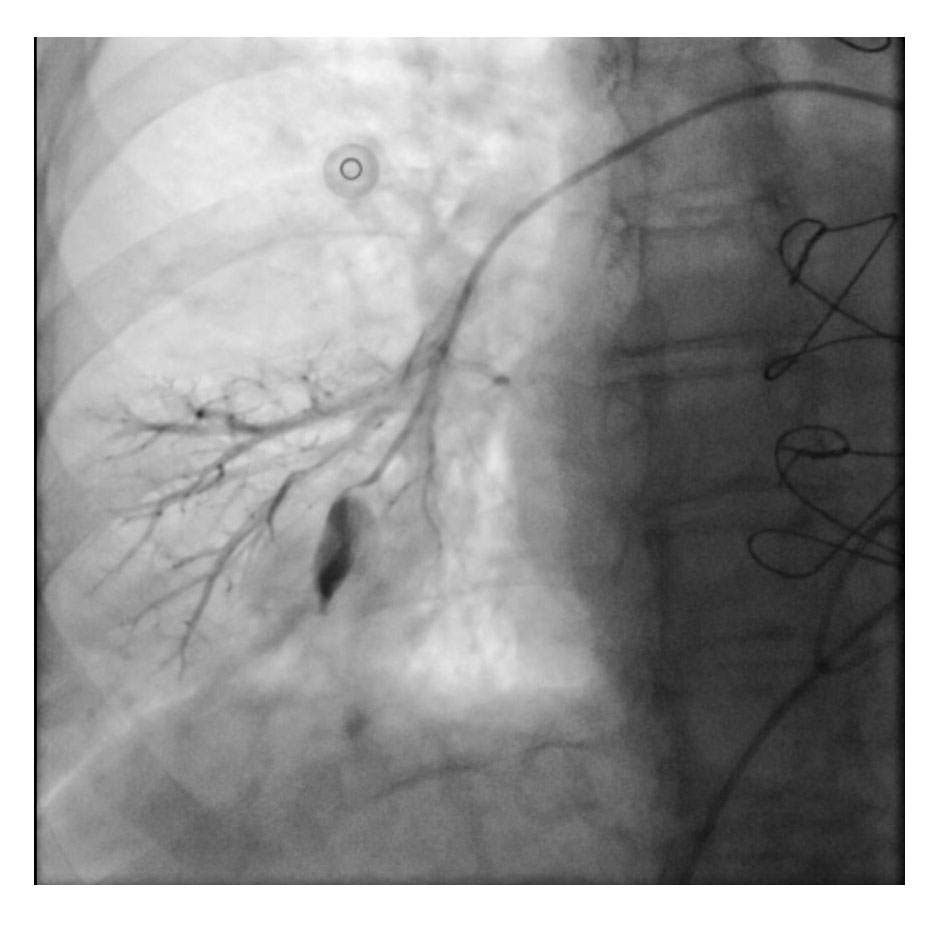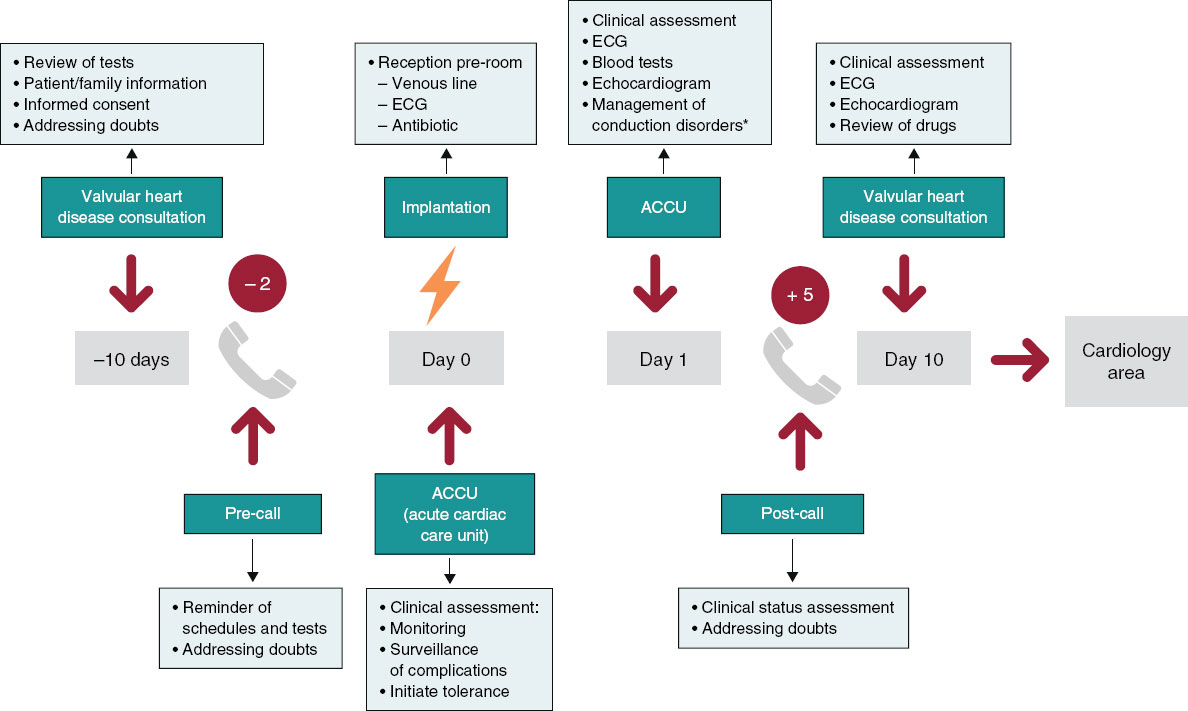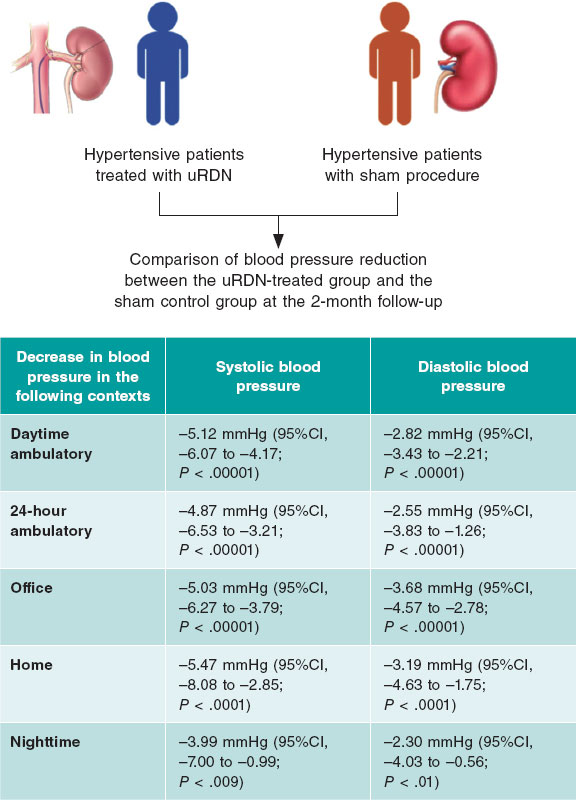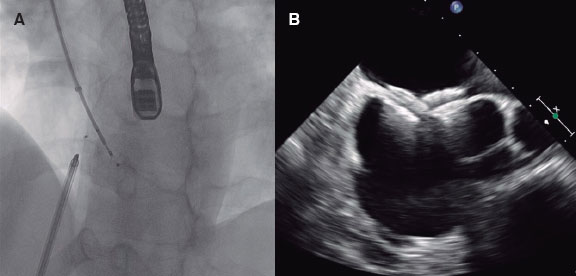| 1 x afterRenderModule mod_custom (Home Superior Izquierda -EN) (5.67MB) (13.94%) | 111ms |
| 1 x afterRenderComponent com_content (125.59KB) (11.65%) | 92.85ms |
| 1 x afterRender (997.45KB) (9.12%) | 72.66ms |
| 1 x afterRenderModule mod_custom (Home Inferior Derecha -EN) (2.56MB) (8.76%) | 69.82ms |
| 1 x afterInitialise (3.38MB) (4.61%) | 36.76ms |
| 1 x afterRenderModule mod_custom (Home Debate Enlaces EN) (1.47MB) (3.88%) | 30.93ms |
| 1 x Before Access::getAssetRules (id:8 name:com_content) (1.11MB) (3.83%) | 30.52ms |
| 1 x afterRenderModule mod_custom (Article Herramientas Estadísticas - ENG) (702KB) (3.17%) | 25.27ms |
| 1 x afterRenderModule mod_custom (Most read) (421.21KB) (2.43%) | 19.36ms |
| 1 x beforeRenderRawModule mod_breadcrumbs (Breadcrumbs EN) (1.25MB) (2.41%) | 19.25ms |
| 1 x afterRoute (909.16KB) (2.31%) | 18.43ms |
| 1 x afterRenderModule mod_custom (Home Superior Derecha -EN) (991.27KB) (2.17%) | 17.29ms |
| 1 x afterRenderModule mod_custom (Header Article -EN) (432.74KB) (2.07%) | 16.50ms |
| 1 x afterRenderModule mod_custom (Most shared) (320.29KB) (1.89%) | 15.08ms |
| 1 x afterRenderModule mod_custom (Article Herramientas Traducción - ENG) (263.87KB) (1.87%) | 14.89ms |
| 1 x afterRenderModule mod_custom (Article - Referencia ) (687.73KB) (1.33%) | 10.62ms |
| 1 x afterRenderModule mod_custom (Article Herramientas Descargar - ENG) (120.88KB) (1.12%) | 8.96ms |
| 1 x afterRenderRawModule mod_dms3_refs (Article Herramientas Exportar - ENG) (52.92KB) (1.05%) | 8.33ms |
| 1 x afterRenderModule mod_custom (Debate Title) (382.74KB) (1.02%) | 8.12ms |
| 1 x afterRenderModule mod_custom (Innovacion Herramientas Traducción EN) (142.7KB) (1.02%) | 8.09ms |
| 1 x afterRenderModule mod_custom (Article DOI activo) (309.17KB) (1.01%) | 8.05ms |
| 1 x afterRenderModule mod_custom (Article Herramientas Imprimir -EN) (121.35KB) (0.96%) | 7.63ms |
| 1 x afterRenderModule mod_custom (Caso clínico 1) (165.83KB) (0.89%) | 7.13ms |
| 1 x afterRenderModule mod_custom (Caso clínico 2) (165.83KB) (0.89%) | 7.11ms |
| 1 x afterRenderModule mod_custom (Article Herramientas Compartir -EN) (301.19KB) (0.89%) | 7.07ms |
| 1 x afterDispatch (355.65KB) (0.86%) | 6.83ms |
| 1 x afterRenderModule mod_custom (Innovacion Herramientas Imprimir -EN) (121.2KB) (0.83%) | 6.60ms |
| 1 x Before Access::getAssetRules (id:1 name:root.1) (296.86KB) (0.82%) | 6.53ms |
| 1 x afterRenderModule mod_custom (Article Category -EN) (213.83KB) (0.81%) | 6.46ms |
| 1 x afterRenderModule mod_custom (Article - Comments Section) (114.53KB) (0.8%) | 6.38ms |
| 1 x afterRenderModule mod_custom (Article Herramientas Material Adicional) (171.88KB) (0.78%) | 6.21ms |
| 1 x afterRenderModule mod_custom (Innovacion Herramientas Compartir -EN) (212.26KB) (0.77%) | 6.10ms |
| 1 x afterRenderModule mod_custom (Foto Autor) (153.12KB) (0.71%) | 5.67ms |
| 1 x afterRenderModule mod_custom (Article Related contents EN) (170.63KB) (0.69%) | 5.53ms |
| 1 x afterRenderModule mod_custom (Article Authors) (155.34KB) (0.68%) | 5.45ms |
| 1 x afterRenderModule mod_custom (Article Subtitulo) (152.79KB) (0.67%) | 5.34ms |
| 1 x afterRenderModule mod_custom (Article Translated Title) (151.58KB) (0.65%) | 5.19ms |
| 1 x afterRenderModule mod_custom (Article Title) (141.71KB) (0.62%) | 4.96ms |
| 1 x afterRenderModule mod_custom (Innovacion Herramientas Estadísticas -EN) (131.52KB) (0.6%) | 4.76ms |
| 1 x afterRenderModule mod_custom (EMAIL Y TWITTER INGLES) (122.54KB) (0.58%) | 4.59ms |
| 1 x afterRenderModule mod_custom (Separador) (121.71KB) (0.57%) | 4.53ms |
| 1 x After Access::preloadPermissions (com_content) (1000.61KB) (0.52%) | 4.14ms |
| 1 x afterRenderRawModule mod_languages (Language Switcher) (8.3KB) (0.31%) | 2.47ms |
| 1 x afterLoad (73.26KB) (0.28%) | 2.22ms |
| 1 x beforeRenderRawModule mod_custom (Publication of Sociedad Española de Cardiología) (3.55KB) (0.21%) | 1.66ms |
| 1 x afterRenderRawModule mod_articles_good_search (Articles Good Search Total (Lateral) (EN)) (41.79KB) (0.17%) | 1.37ms |
| 1 x beforeRenderRawModule mod_custom (Article Herramientas Descargar - ENG) (5.77KB) (0.15%) | 1.21ms |
| 1 x afterRenderRawModule mod_breadcrumbs (Breadcrumbs EN) (49.38KB) (0.13%) | 1.01ms |
| 1 x beforeRenderRawModule mod_menu (Footer Final EN) (3.03KB) (0.11%) | 900μs |
| 1 x afterRenderRawModule mod_menu (Footer Final EN) (27.91KB) (0.11%) | 862μs |
| 1 x afterRenderRawModule mod_menu (Publish) (20.76KB) (0.1%) | 832μs |
| 1 x afterRenderRawModule mod_menu (About us) (22.11KB) (0.1%) | 772μs |
| 1 x After Access::preloadComponents (all components) (129.49KB) (0.1%) | 763μs |
| 1 x afterRenderRawModule mod_menu (Content) (18.4KB) (0.09%) | 756μs |
| 1 x beforeRenderRawModule mod_menu (Content) (4.88KB) (0.09%) | 700μs |
| 1 x Before Access::preloadComponents (all components) (195.02KB) (0.09%) | 692μs |
| 1 x afterRenderRawModule mod_menu (Sidebar Menú EN) (14.85KB) (0.08%) | 648μs |
| 1 x afterRenderRawModule mod_menu (Sidebar - REC: Publications) (15.73KB) (0.07%) | 541μs |
| 1 x afterRenderRawModule mod_menu (Permanyer Publications) (10.02KB) (0.06%) | 483μs |
| 1 x beforeRenderRawModule mod_custom (Home Superior Izquierda -EN) (64B) (0.06%) | 456μs |
| 1 x afterRenderModule mod_custom (Home Concurso Hemodinamica EN) (4.48KB) (0.05%) | 436μs |
| 1 x afterRenderRawModule mod_esmedicodisclaimer (esmedicodisclaimer esmedicodisclaimer) (6.49KB) (0.05%) | 405μs |
| 1 x afterRenderModule mod_breadcrumbs (Breadcrumbs EN) (4.09KB) (0.04%) | 348μs |
| 1 x afterRenderRawModule mod_custom (Header Article -EN) (3.95KB) (0.04%) | 339μs |
| 1 x beforeRenderComponent com_content (12.31KB) (0.04%) | 336μs |
| 1 x beforeRenderRawModule mod_custom (Article - Comments Section) (3.48KB) (0.04%) | 333μs |
| 1 x beforeRenderRawModule mod_custom (Debate Title) (368B) (0.04%) | 328μs |
| 1 x afterRenderModule mod_custom (Publication of Sociedad Española de Cardiología) (3.31KB) (0.04%) | 314μs |
| 1 x afterRenderModule mod_articles_good_search (Articles Good Search Total (Lateral) (EN)) (10.48KB) (0.04%) | 313μs |
| 1 x afterRenderRawModule mod_lightbox (Lightbox) (7.35KB) (0.03%) | 278μs |
| 1 x beforeRenderRawModule mod_custom (Header Article -EN) (64B) (0.03%) | 254μs |
| 1 x beforeRenderRawModule mod_custom (Home Concurso Hemodinamica EN) (4.69KB) (0.03%) | 215μs |
| 1 x beforeRenderRawModule mod_custom (Home Superior Derecha -EN) (12.5KB) (0.03%) | 200μs |
| 1 x afterRenderModule mod_custom (Article - Disponible Online -EN) (2.64KB) (0.02%) | 180μs |
| 1 x afterRenderModule mod_menu (Content) (3.17KB) (0.02%) | 174μs |
| 1 x afterRenderModule mod_menu (Footer Final EN) (3.67KB) (0.02%) | 167μs |
| 1 x afterRenderModule mod_esmedicodisclaimer (esmedicodisclaimer esmedicodisclaimer) (5.39KB) (0.02%) | 165μs |
| 1 x afterRenderRawModule mod_custom (Article Herramientas Descargar - ENG) (1.08KB) (0.02%) | 161μs |
| 1 x afterRenderModule mod_lightbox (Lightbox) (4.67KB) (0.02%) | 153μs |
| 1 x afterRenderModule mod_languages (Language Switcher) (3.88KB) (0.02%) | 150μs |
| 1 x beforeRenderRawModule mod_menu (Publish) (1.38KB) (0.02%) | 149μs |
| 1 x afterRenderModule mod_menu (Publish) (3.42KB) (0.02%) | 145μs |
| 1 x afterRenderModule mod_menu (About us) (3.28KB) (0.02%) | 142μs |
| 1 x afterRenderModule mod_menu (Sidebar Menú EN) (2.92KB) (0.02%) | 142μs |
| 1 x afterRenderModule mod_dms3_refs (Article Herramientas Exportar - ENG) (3.14KB) (0.02%) | 139μs |
| 1 x beforeRenderRawModule mod_menu (About us) (400B) (0.02%) | 137μs |
| 1 x afterRenderModule mod_menu (Permanyer Publications) (3.11KB) (0.02%) | 135μs |
| 1 x afterRenderModule mod_custom (Factor de Impacto EN) (2.84KB) (0.02%) | 134μs |
| 1 x afterRenderRawModule mod_custom (Article Herramientas Traducción - ENG) (1.05KB) (0.02%) | 134μs |
| 1 x afterRenderModule mod_menu (Sidebar - REC: Publications) (3.45KB) (0.02%) | 132μs |
| 1 x afterRenderRawModule mod_custom (Innovacion Herramientas Traducción EN) (1.05KB) (0.02%) | 129μs |
| 1 x afterRenderRawModule mod_custom (Innovacion Herramientas Imprimir -EN) (992B) (0.02%) | 128μs |
| 1 x afterRenderRawModule mod_custom (Article Herramientas Imprimir -EN) (928B) (0.02%) | 127μs |
| 1 x beforeRenderRawModule mod_menu (Permanyer Publications) (272B) (0.02%) | 125μs |
| 1 x beforeRenderRawModule mod_languages (Language Switcher) (6.92KB) (0.02%) | 121μs |
| 1 x beforeRenderRawModule mod_lightbox (Lightbox) (6.44KB) (0.02%) | 120μs |
| 1 x afterRenderRawModule mod_custom (Most shared) (912B) (0.01%) | 108μs |
| 1 x afterRenderRawModule mod_custom (Publication of Sociedad Española de Cardiología) (1.09KB) (0.01%) | 106μs |
| 1 x afterRenderRawModule mod_custom (Home Superior Izquierda -EN) (928B) (0.01%) | 104μs |
| 1 x afterRenderRawModule mod_custom (Article - Disponible Online -EN) (2.22KB) (0.01%) | 101μs |
| 1 x After Access::getAssetRules (id:1937 name:com_content.article.155) (8.3KB) (0.01%) | 97μs |
| 1 x afterRenderRawModule mod_custom (Home Debate Enlaces EN) (928B) (0.01%) | 96μs |
| 1 x afterRenderRawModule mod_custom (Debate Title) (976B) (0.01%) | 93μs |
| 1 x afterRenderRawModule mod_custom (Home Superior Derecha -EN) (928B) (0.01%) | 93μs |
| 1 x afterRenderRawModule mod_custom (Article DOI activo) (1.02KB) (0.01%) | 91μs |
| 1 x afterRenderRawModule mod_custom (Caso clínico 2) (1.14KB) (0.01%) | 91μs |
| 1 x afterRenderRawModule mod_custom (Home Inferior Derecha -EN) (928B) (0.01%) | 91μs |
| 1 x afterRenderRawModule mod_custom (Article Herramientas Estadísticas - ENG) (944B) (0.01%) | 91μs |
| 1 x afterRenderRawModule mod_custom (Caso clínico 1) (1.14KB) (0.01%) | 89μs |
| 1 x afterRenderRawModule mod_custom (Foto Autor) (1.02KB) (0.01%) | 89μs |
| 1 x afterRenderRawModule mod_custom (Article - Referencia ) (1.02KB) (0.01%) | 87μs |
| 1 x afterRenderRawModule mod_custom (Article Related contents EN) (3.53KB) (0.01%) | 87μs |
| 1 x afterRenderRawModule mod_custom (Article Herramientas Material Adicional) (944B) (0.01%) | 87μs |
| 1 x afterRenderRawModule mod_custom (Article Title) (976B) (0.01%) | 86μs |
| 1 x afterRenderRawModule mod_custom (Factor de Impacto EN) (976B) (0.01%) | 85μs |
| 1 x afterRenderRawModule mod_custom (Article Subtitulo) (976B) (0.01%) | 84μs |
| 1 x afterRenderRawModule mod_custom (Article - Comments Section) (928B) (0.01%) | 84μs |
| 1 x afterRenderRawModule mod_custom (Home Concurso Hemodinamica EN) (928B) (0.01%) | 84μs |
| 1 x afterRenderRawModule mod_custom (Separador) (1.02KB) (0.01%) | 83μs |
| 1 x afterRenderRawModule mod_custom (EMAIL Y TWITTER INGLES) (1.03KB) (0.01%) | 83μs |
| 1 x afterRenderRawModule mod_custom (Innovacion Herramientas Estadísticas -EN) (944B) (0.01%) | 83μs |
| 1 x afterRenderRawModule mod_custom (Article Category -EN) (1.02KB) (0.01%) | 81μs |
| 1 x afterRenderRawModule mod_custom (Article Translated Title) (992B) (0.01%) | 81μs |
| 1 x afterRenderRawModule mod_custom (Article Herramientas Compartir -EN) (928B) (0.01%) | 81μs |
| 1 x afterRenderRawModule mod_custom (Most read) (11.89KB) (0.01%) | 80μs |
| 1 x afterRenderRawModule mod_custom (Article Authors) (976B) (0.01%) | 79μs |
| 1 x afterRenderRawModule mod_custom (Innovacion Herramientas Compartir -EN) (928B) (0.01%) | 79μs |
| 1 x Before Access::getAssetRules (id:1937 name:com_content.article.155) (34.65KB) (0.01%) | 43μs |
| 1 x beforeRenderRawModule mod_custom (Home Debate Enlaces EN) (4.86KB) (0.01%) | 43μs |
| 1 x beforeRenderRawModule mod_articles_good_search (Articles Good Search Total (Lateral) (EN)) (9.75KB) (0%) | 38μs |
| 1 x beforeRenderRawModule mod_custom (Article Herramientas Traducción - ENG) (1.22KB) (0%) | 38μs |
| 1 x beforeRenderRawModule mod_custom (Home Inferior Derecha -EN) (12.86KB) (0%) | 36μs |
| 1 x beforeRenderRawModule mod_custom (Innovacion Herramientas Traducción EN) (1.84KB) (0%) | 34μs |
| 1 x beforeRenderRawModule mod_custom (Article DOI activo) (1.22KB) (0%) | 33μs |
| 1 x beforeRenderRawModule mod_custom (Caso clínico 2) (2.72KB) (0%) | 33μs |
| 1 x beforeRenderRawModule mod_custom (Article Herramientas Imprimir -EN) (1.52KB) (0%) | 33μs |
| 1 x beforeRenderRawModule mod_custom (Caso clínico 1) (2KB) (0%) | 32μs |
| 1 x beforeRenderRawModule mod_custom (Most shared) (1.88KB) (0%) | 32μs |
| 1 x beforeRenderRawModule mod_custom (Article Herramientas Estadísticas - ENG) (9KB) (0%) | 32μs |
| 1 x beforeRenderRawModule mod_custom (Article - Disponible Online -EN) (1.98KB) (0%) | 31μs |
| 1 x beforeRenderRawModule mod_custom (Article - Referencia ) (1.61KB) (0%) | 31μs |
| 1 x beforeRenderRawModule mod_custom (Foto Autor) (1.69KB) (0%) | 31μs |
| 1 x beforeRenderRawModule mod_custom (Innovacion Herramientas Imprimir -EN) (1.36KB) (0%) | 31μs |
| 1 x beforeRenderRawModule mod_custom (Article Herramientas Material Adicional) (9.47KB) (0%) | 29μs |
| 1 x beforeRenderRawModule mod_custom (Article Title) (1.44KB) (0%) | 28μs |
| 1 x beforeRenderRawModule mod_custom (Article Subtitulo) (1.38KB) (0%) | 25μs |
| 1 x beforeRenderRawModule mod_custom (Factor de Impacto EN) (13.11KB) (0%) | 25μs |
| 1 x beforeRenderRawModule mod_custom (EMAIL Y TWITTER INGLES) (1.64KB) (0%) | 25μs |
| 1 x beforeRenderRawModule mod_custom (Separador) (1.75KB) (0%) | 24μs |
| 1 x beforeRenderRawModule mod_esmedicodisclaimer (esmedicodisclaimer esmedicodisclaimer) (2.23KB) (0%) | 23μs |
| 1 x beforeRenderRawModule mod_custom (Article Translated Title) (1.61KB) (0%) | 23μs |
| 1 x beforeRenderRawModule mod_custom (Article Herramientas Compartir -EN) (3.52KB) (0%) | 23μs |
| 1 x beforeRenderRawModule mod_custom (Innovacion Herramientas Estadísticas -EN) (6.34KB) (0%) | 23μs |
| 1 x beforeRenderRawModule mod_custom (Article Authors) (1.44KB) (0%) | 22μs |
| 1 x beforeRenderRawModule mod_custom (Article Category -EN) (800B) (0%) | 21μs |
| 1 x beforeRenderRawModule mod_custom (Article Related contents EN) (1.36KB) (0%) | 21μs |
| 1 x beforeRenderRawModule mod_menu (Sidebar Menú EN) (NANB) (0%) | 21μs |
| 1 x beforeRenderRawModule mod_menu (Sidebar - REC: Publications) (880B) (0%) | 21μs |
| 1 x beforeRenderRawModule mod_custom (Innovacion Herramientas Compartir -EN) (64B) (0%) | 21μs |
| 1 x beforeRenderRawModule mod_dms3_refs (Article Herramientas Exportar - ENG) (2.66KB) (0%) | 19μs |
| 1 x beforeRenderRawModule mod_custom (Most read) (2.64KB) (0%) | 19μs |
| 1 x After Access::getAssetRules (id:1 name:root.1) (6.48KB) (0%) | 17μs |
| 1 x Before Access::preloadPermissions (com_content) (1.79KB) (0%) | 9μs |
| 1 x After Access::getAssetRules (id:8 name:com_content) (1.28KB) (0%) | 9μs |
| 1 x beforeRenderModule mod_custom (Article Related contents EN) (736B) (0%) | 8μs |
| 1 x beforeRenderModule mod_breadcrumbs (Breadcrumbs EN) (704B) (0%) | 5μs |
| 1 x beforeRenderModule mod_custom (Article Herramientas Descargar - ENG) (736B) (0%) | 5μs |
| 1 x beforeRenderModule mod_dms3_refs (Article Herramientas Exportar - ENG) (736B) (0%) | 5μs |
| 1 x beforeRenderModule mod_menu (Content) (704B) (0%) | 5μs |
| 1 x beforeRenderModule mod_custom (Header Article -EN) (720B) (0%) | 4μs |
| 1 x beforeRenderModule mod_custom (Foto Autor) (720B) (0%) | 4μs |
| 1 x beforeRenderModule mod_custom (Article - Comments Section) (736B) (0%) | 4μs |
| 1 x beforeRenderModule mod_lightbox (Lightbox) (720B) (0%) | 4μs |
| 1 x beforeRenderModule mod_languages (Language Switcher) (704B) (0%) | 4μs |
| 1 x beforeRenderModule mod_articles_good_search (Articles Good Search Total (Lateral) (EN)) (752B) (0%) | 4μs |
| 1 x beforeRenderModule mod_custom (Home Concurso Hemodinamica EN) (736B) (0%) | 4μs |
| 1 x beforeRenderModule mod_menu (Sidebar Menú EN) (720B) (0%) | 4μs |
| 1 x beforeRenderModule mod_custom (Most shared) (720B) (0%) | 4μs |
| 1 x beforeRenderModule mod_custom (Article Herramientas Traducción - ENG) (736B) (0%) | 4μs |
| 1 x beforeRenderModule mod_custom (Article Herramientas Imprimir -EN) (736B) (0%) | 4μs |
| 1 x beforeRenderModule mod_custom (Innovacion Herramientas Imprimir -EN) (736B) (0%) | 4μs |
| 1 x beforeRenderModule mod_esmedicodisclaimer (esmedicodisclaimer esmedicodisclaimer) (752B) (0%) | 4μs |
| 1 x beforeRenderModule mod_menu (Publish) (704B) (0%) | 4μs |
| 1 x beforeRenderModule mod_menu (Permanyer Publications) (720B) (0%) | 4μs |
| 1 x beforeRenderModule mod_menu (Footer Final EN) (720B) (0%) | 4μs |
| 1 x beforeRenderModule mod_custom (Innovacion Herramientas Traducción EN) (736B) (0%) | 4μs |
| 1 x beforeRenderModule mod_menu (About us) (704B) (0%) | 4μs |
| 1 x beforeRenderModule mod_custom (Debate Title) (720B) (0%) | 3μs |
| 1 x beforeRenderModule mod_custom (Article DOI activo) (720B) (0%) | 3μs |
| 1 x beforeRenderModule mod_custom (Article Category -EN) (720B) (0%) | 3μs |
| 1 x beforeRenderModule mod_custom (Article - Referencia ) (720B) (0%) | 3μs |
| 1 x beforeRenderModule mod_custom (Article Title) (720B) (0%) | 3μs |
| 1 x beforeRenderModule mod_custom (Article Authors) (720B) (0%) | 3μs |
| 1 x beforeRenderModule mod_custom (Home Superior Izquierda -EN) (736B) (0%) | 3μs |
| 1 x beforeRenderModule mod_custom (Home Superior Derecha -EN) (736B) (0%) | 3μs |
| 1 x beforeRenderModule mod_custom (Publication of Sociedad Española de Cardiología) (752B) (0%) | 3μs |
| 1 x beforeRenderModule mod_custom (EMAIL Y TWITTER INGLES) (720B) (0%) | 3μs |
| 1 x beforeRenderModule mod_custom (Innovacion Herramientas Compartir -EN) (736B) (0%) | 3μs |
| 1 x beforeRenderModule mod_custom (Article Herramientas Compartir -EN) (736B) (0%) | 3μs |
| 1 x beforeRenderModule mod_custom (Innovacion Herramientas Estadísticas -EN) (752B) (0%) | 3μs |
| 1 x beforeRenderModule mod_custom (Article Herramientas Estadísticas - ENG) (752B) (0%) | 3μs |
| 1 x beforeRenderModule mod_custom (Article - Disponible Online -EN) (736B) (0%) | 3μs |
| 1 x beforeRenderModule mod_custom (Article Translated Title) (736B) (0%) | 3μs |
| 1 x beforeRenderModule mod_custom (Caso clínico 1) (720B) (0%) | 3μs |
| 1 x beforeRenderModule mod_custom (Caso clínico 2) (720B) (0%) | 3μs |
| 1 x beforeRenderModule mod_custom (Home Inferior Derecha -EN) (736B) (0%) | 3μs |
| 1 x beforeRenderModule mod_custom (Factor de Impacto EN) (720B) (0%) | 3μs |
| 1 x beforeRenderModule mod_menu (Sidebar - REC: Publications) (736B) (0%) | 3μs |
| 1 x beforeRenderModule mod_custom (Separador) (720B) (0%) | 3μs |
| 1 x beforeRenderModule mod_custom (Article Subtitulo) (720B) (0%) | 2μs |
| 1 x beforeRenderModule mod_custom (Home Debate Enlaces EN) (720B) (0%) | 2μs |
| 1 x beforeRenderModule mod_custom (Most read) (720B) (0%) | 2μs |
| 1 x beforeRenderModule mod_custom (Article Herramientas Material Adicional) (736B) (0%) | 2μs |












